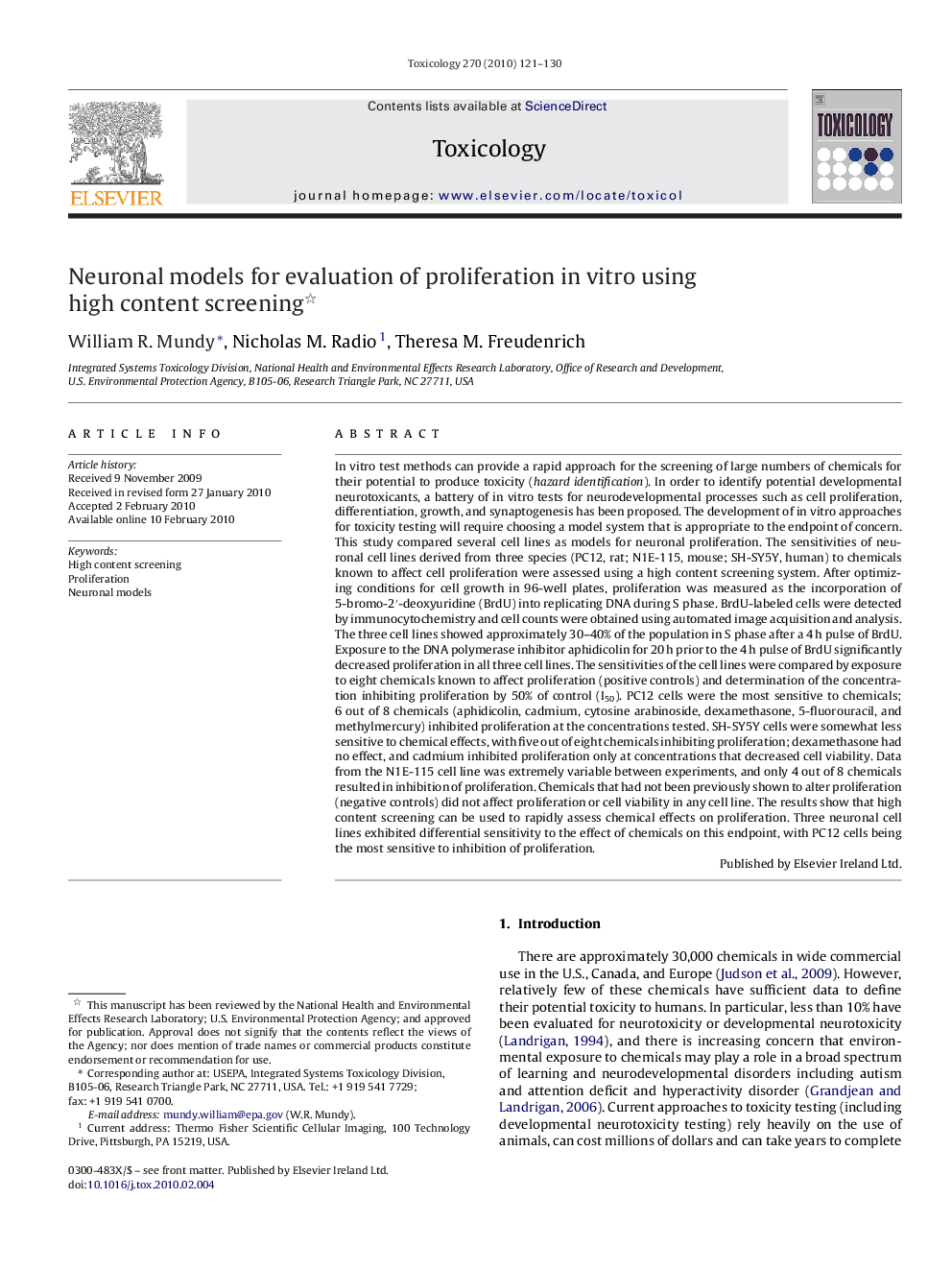| Article ID | Journal | Published Year | Pages | File Type |
|---|---|---|---|---|
| 2596581 | Toxicology | 2010 | 10 Pages |
In vitro test methods can provide a rapid approach for the screening of large numbers of chemicals for their potential to produce toxicity (hazard identification). In order to identify potential developmental neurotoxicants, a battery of in vitro tests for neurodevelopmental processes such as cell proliferation, differentiation, growth, and synaptogenesis has been proposed. The development of in vitro approaches for toxicity testing will require choosing a model system that is appropriate to the endpoint of concern. This study compared several cell lines as models for neuronal proliferation. The sensitivities of neuronal cell lines derived from three species (PC12, rat; N1E-115, mouse; SH-SY5Y, human) to chemicals known to affect cell proliferation were assessed using a high content screening system. After optimizing conditions for cell growth in 96-well plates, proliferation was measured as the incorporation of 5-bromo-2′-deoxyuridine (BrdU) into replicating DNA during S phase. BrdU-labeled cells were detected by immunocytochemistry and cell counts were obtained using automated image acquisition and analysis. The three cell lines showed approximately 30–40% of the population in S phase after a 4 h pulse of BrdU. Exposure to the DNA polymerase inhibitor aphidicolin for 20 h prior to the 4 h pulse of BrdU significantly decreased proliferation in all three cell lines. The sensitivities of the cell lines were compared by exposure to eight chemicals known to affect proliferation (positive controls) and determination of the concentration inhibiting proliferation by 50% of control (I50). PC12 cells were the most sensitive to chemicals; 6 out of 8 chemicals (aphidicolin, cadmium, cytosine arabinoside, dexamethasone, 5-fluorouracil, and methylmercury) inhibited proliferation at the concentrations tested. SH-SY5Y cells were somewhat less sensitive to chemical effects, with five out of eight chemicals inhibiting proliferation; dexamethasone had no effect, and cadmium inhibited proliferation only at concentrations that decreased cell viability. Data from the N1E-115 cell line was extremely variable between experiments, and only 4 out of 8 chemicals resulted in inhibition of proliferation. Chemicals that had not been previously shown to alter proliferation (negative controls) did not affect proliferation or cell viability in any cell line. The results show that high content screening can be used to rapidly assess chemical effects on proliferation. Three neuronal cell lines exhibited differential sensitivity to the effect of chemicals on this endpoint, with PC12 cells being the most sensitive to inhibition of proliferation.
